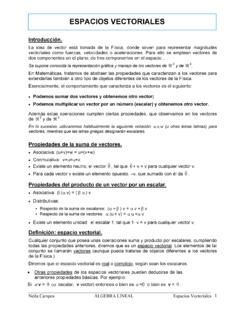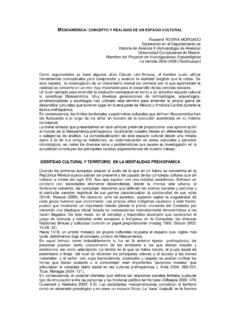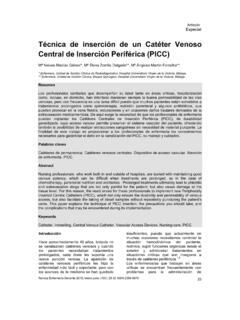Transcription of Traffic Flow Management in the National Airspace System
1 Traffic Flow Management in the National Airspace SystemOctober 2009A presentation explaining terms, techniques, and programs associated with Traffic flow Management in the National Airspace || October 2009 Traffic Flow Management in the National Airspace System || 3Re s tR i c t i o n o f Li a b iL i t y a n d di s cL a i m eRThe Federal Aviation Administration (FAA) makes no claims, promises, or guarantees about the accuracy, completeness, or adequacy of this material and expressly disclaims liability for errors and omissions in the contents. No warranty of any kind, implied, expressed, or statutory, including, but not limited to, warranties of non-infringement of third party rights, title, merchantability, fitness for a particular purpose, and freedom from computer virus, is given with respect to the contents of this material or its hyperlinks to Internet in this presentation to any specific commercial products, processes, or services, or the use of any trade, firm, or corporation name is for the information and convenience of the public, and does not constitute endorsement, recommendation.
2 Or favoring by || October 2009 Traffic Flow Management in the National Airspace System || 5ta bL e o f co n t e n t sIntroductionSystem Operations MissionOrganizational StructureGeneral Managers of Tactical Operations Areas of ResponsibilityTraffic Management OverviewBasic Traffic Management Techniques and TermsGround Delay Programs (GDP)Time-based Flow Management (TBFM) Traffic Management Advisor (TMA) Airspace Flow Programs (AFP)Ground Stops (GS)Adaptive Compression (AC)Integrated Collaborative Rerouting (ICR)DelayTier InformationOperational Information System (OIS)AdvisoriesPlanning TeamWeather ToolsDe-icing/Anti-icingSevere Weather Avoidance Plan (SWAP)RoutesPreferred RoutesCoded Departure Routes (CDR) National PlaybookFlow Evaluation Area (FEA)/Flow Constrained Area (FCA)North American Route Program (NRP)Priority HandlingDiversion RecoverySpecial Traffic Management Program (STMP)High Density Traffic Airports (HDTA)7891011152130303237394041434445464 74850525455565758596061636 || October 2009 Traffic Flow Management in the National Airspace System || 7in tR o d u c t i o nWelcome to an introduction of Traffic Flow Management (TFM) for flight operations personnel.
3 This material will explain terms, techniques, and programs associated with Traffic Flow Management in the National Airspace System (NAS). As flight operations personnel and pilots, you may feel the effects of Traffic Management Initiatives (TMI) when flying into highly congested Airspace , which may be caused by Traffic volume, special events, or weather conditions. Knowing how to access relevant information and understanding Traffic Management initiatives will aid you in planning your flight, avoiding needless delay, and gaining full access to the organizations have dedicated resources for coordinating with FAA Traffic Management personnel, but you don t have to be an airline or large general aviation (GA) company to benefit from understanding how Traffic Management initiatives may affect your Traffic Flow ChartTowerDeparture Tower(1) Gives departure clearance(2) Controls aircraft on the ground(3) Controls aircraft in the air within 5 milesTRACONTRACON controls aircraft in the terminal Airspace (1) 5 to 40 miles from the airport, or(2) until an altitude of above 10,000 feetARTCCsARTCC controls the aircraft in its specific Airspace (1)
4 ARTCC Airspace is further divided into sectors. (2) The control of aircraft is handed from one sector to another and from one ARTCC to another when a boundary is crossedTRACONTRACON controls aircraft in the terminal Airspace (1) 5 to 40 miles from the airport, or(2) when below an altitude of 10,000 feetTowerArrival Tower(1) Gives clearance to land(2) Controls aircraft on the final approach to the airport(3) Controls aircraft on the groundjjjjjDD8 || October 2009 Traffic Flow Management in the National Airspace System || 9sy s t e m op eR a t i o n s mi s s i o nThe United States Traffic Management System mission is to balance Air Traffic demand with System capacity to ensure the maximum efficient utilization of the addition, the System Operations mission is to:Deliver the value and high quality Air Traffic services that our users want.
5 Provide safe, secure, and cost-effective Air Traffic services that our stakeholders expect, now and into the a professional workplace for our employees to excel and be innovative, fostering enthusiasm and pride for our vision and the services we accountable for our performance in providing Air Traffic services, with clear and specific goals linked to our stakeholders. oR g a n i z a t i o n aL st R u c t uR eWhat is the relationship between Traffic Management and Air Traffic Control (ATC)? Traffic Management is a function in all Air Route Traffic Control Centers (ARTCCs), selected terminal facilities and the David J. Hurley Air Traffic Control System Command Center (ATCSCC). Traffic Management personnel are air Traffic controllers who analyze the demand on the System and implement initiatives that are relayed to En Route and Terminal controllers.
6 Those En Route and Terminal controllers, along with System users relay information to Traffic Management personnel for use in their decision-making and System customers relay information to Traffic Management personnel for use in their decision-making is the hierarchy?For Traffic Management issues, tower personnel work through the Terminal Radar Approach Control (TRACON), if available, or directly with the overlying general, TRACON personnel work through the overlying ARTCC. ARTCC personnel coordinate directly with the ATCSCC. The ATCSCC has final approval authority for all National Traffic Management initiatives and is responsible for resolving inter-facility issues. The hierarchy for other issues is for field facilities to work through their Service Area Office, which reports to Washington || October 2009 Traffic Flow Management in the National Airspace System || 11ge n eR a L ma n a g eR s o f ta c t i c aL op eR a t i o n s (gmtos) aR e a so f Re s p o n s i b iL i t yThe GMTOs provide oversight and line authority to Traffic Management personnel and serve as expert ATC advisors, keeping field facilities, air Traffic division managers, directors, vice presidents, and National operations managers (ATCSCC) aware of Traffic Management initiatives and problems.
7 They provide daily updates on real-time Traffic Management issues and previous days activities to customers. They maintain frequent contact and conduct meetings with both internal and external stakeholders including subordinates, peer Management representatives, administrative support staff, managers, supervisors, members of the general public and representatives of the aviation industry. Who do I call with questions or concerns?You may call the facility s Traffic Management officer when you get on the ground or call your company or professional organization to address it with the a f f i c ma n a g e m e n t ov eR v i e wWhat is Traffic Management ? Traffic Management is the craft of managing the flow of air Traffic in the NAS based on capacity and does it differ from Air Traffic Control (ATC)?
8 All air Traffic controllers, including Traffic managers, strive to provide a safe, orderly, and expeditious flow of Traffic on a first-come, first-served basis. The differences lay in the scope, time parameters, tools, equipment, and the communication processes. The separation of air Traffic is the responsibility of air Traffic controllers, utilizing the tools at their disposal. The tools may range from a non-radar ATC clearance, relayed through a flight service station, to the issuance of a clearance to a pilot while under radar normal communication process is:ZBWZJXZMAZNYZOBZDCZMEZHUZABZ O AZIDZTLZKCZLAZFWZ A UZLCZSEZMPZDVEast Service AreaNortheastCentral Service AreaMidwestWest Service AreaControllerTraffic ManagerPilotDispatcher12 || October 2009 Traffic Flow Management in the National Airspace System || 13tR a f f i c ma n a g e m e n t ov eR v i e wWhat is a System Approach?
9 It is a Management approach that considers the impact of individual actions on the whole. Traffic Management personnel facilitate a System approach in managing Traffic . They consider who or what may be impacted by events in the NAS and focus on a coordinated effort to ensure equity in the delivery of air Traffic System approach is taken in collaborative decision-making activities with the System stakeholders (stakeholders include air Traffic control, airlines, general aviation or any other participants in the NAS). Efficiency and safety are the goals, while collaboration is the method to achieve these goals. Stakeholders look at the costs and benefits to the System as a whole and strive for equitable distribution of is Collaborative Decision Making (CDM)?It is a group effort involving the System stakeholders in determining the best approach to a given there any one Collaborative Decision process preferred over another?
10 No. Different strategies or processes are based on a particular situation. As events evolve, from forecasted to actual, different Traffic Management Initiatives (TMI) are applied as appropriate. In most cases, the goal is to use the least restrictive TMI to manage the there any way I can avoid being involved in a TMI?All aircraft that meet the specified criteria of the TMI are included. Aircraft that are impacted by a TMI and require priority handling because of some special circumstance may be accommodated. Sometimes TMI choices are offered to pilots/corporations allowing for decisions based on best business options ( , should I wait to fly later or should I take a reroute around the constraint).tR a f f i c ma n a g e m e n t ov eR v i e wIs compliance mandatory?In accordance with Federal Air Regulations Parts 91, 121 and 135, all operators have the right of refusal of a specific clearance and may elect an alternative.







![arXiv:1301.3781v3 [cs.CL] 7 Sep 2013](/cache/preview/4/d/5/0/4/3/4/0/thumb-4d504340120163c0bdf3f4678d8d217f.jpg)
